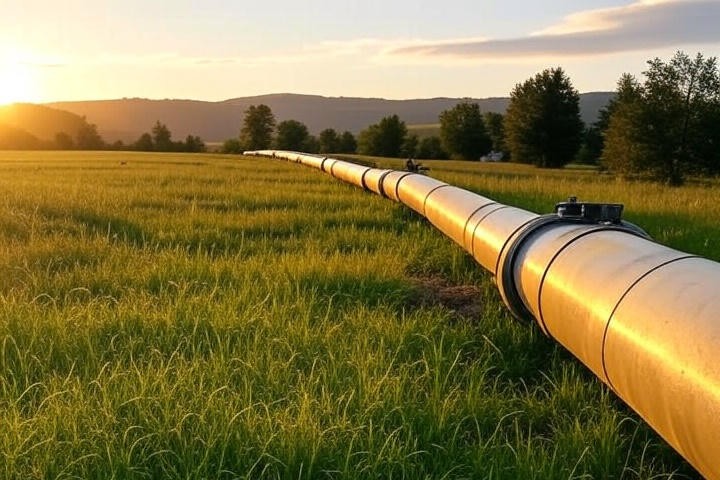· Brian Horton · Market · 3 min read
Momentum Builds for Northeast Natural Gas Pipelines as Demand, Policy, and Market Conditions Align
U.S. energy firms are reviving long-stalled natural gas pipelines in the Northeast amid growing demand, favorable regulatory trends, and rising support for infrastructure expansion. Projects like NESE and the Constitution Pipeline could reshape energy reliability and affordability across the region.

U.S. energy companies are steadily refocusing their efforts on expanding natural gas pipeline infrastructure in the Northeast, driven by strong consumer demand, increasing regulatory momentum, and growing national support for fossil fuel development. As market dynamics shift and political winds turn more favorable, long-stalled pipeline proposals are once again under serious consideration.
The Appalachian Basin—home to the prolific Marcellus and Utica shale formations—remains a powerhouse of natural gas production. Despite record output in recent years, pipeline constraints have limited the region’s ability to deliver low-cost natural gas to high-demand areas across the Northeast. Cities like New York and Boston, for example, continue to rely heavily on expensive heating oil imports due to supply bottlenecks and infrastructure gaps.
Leading energy infrastructure developers including Williams Companies, Boardwalk Pipeline Partners, EQT Corporation, and DT Midstream are responding by re-evaluating projects that had previously faced regulatory pushback. Two of the most prominent proposals under renewed focus are the Northeast Supply Enhancement (NESE) project and the Constitution Pipeline, both designed to transport substantial volumes of Appalachian gas to underserved Northeast markets.
Regulatory Tailwinds and Political Support Reshape the Landscape
Recent policy signals from federal leadership have sparked optimism throughout the natural gas sector. A renewed emphasis on energy security and infrastructure development—paired with a national declaration of energy emergency—has amplified calls for fast-track approvals of critical pipeline projects. Some lawmakers have even floated proposals that would allow companies to expedite permitting for a significant fee, creating a more business-friendly framework for natural gas expansion.
The NESE pipeline, led by Williams, would deliver up to 400 million cubic feet per day to New York City and Long Island—areas that continue to face chronic winter shortages. Meanwhile, the Constitution Pipeline could add another 650 million cubic feet per day into upstate New York, addressing long-standing delivery issues and reducing reliance on more carbon-intensive fuels.
State-level dynamics are also evolving. In New York and New Jersey, where past administrations rejected key permits, recent developments suggest a more collaborative regulatory approach may be emerging. Industry insiders note that energy reliability and cost containment are becoming bipartisan concerns—especially as utility bills climb and grid stress becomes more pronounced during peak weather events.
Economic and Environmental Value for Consumers
Expanding pipeline access offers tangible benefits to Northeast residents and businesses. Natural gas remains one of the most affordable and reliable energy sources for home heating, industrial operations, and electricity generation. Delivering more Appalachian gas to local markets could reduce energy costs, improve grid resilience, and displace higher-emission fuels like fuel oil and imported LNG.
According to Williams, NESE alone could serve over 2 million homes while helping reduce greenhouse gas emissions by as much as 50% compared to heating oil. The Constitution Pipeline is expected to bring similar benefits—supporting local economies, creating construction jobs, and ensuring more consistent energy access across the region.
Looking Ahead: Strategic Infrastructure for a Balanced Energy Future
While opposition from environmental activists and permitting complexities remain obstacles, current market and political conditions provide a strong foundation for strategic pipeline development. If permitted and constructed, these projects could redefine energy delivery in the Northeast, unlocking cleaner, cheaper, and more reliable natural gas for millions of Americans.
As demand for natural gas continues to rise—driven by data centers, LNG exports, and power generation—the case for pipeline infrastructure becomes increasingly compelling. With the right regulatory alignment and stakeholder collaboration, the Northeast could soon see long-overdue investment in the energy systems it critically needs.
- Constitution Pipeline
- natural gas pipeline infrastructure
- Appalachian natural gas